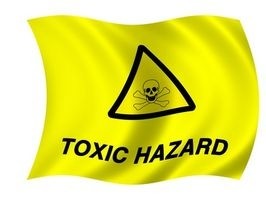Workplace Industrial Safety

If you own a business, you should do all you can to guarantee workplace safety to your employees. The Occupational Safety and Health Administration of the United States (OSHA) serves as the main provider of government safety rules; however industrial safety laws are in effect on the state and local level as well. Industrial safety rules vary by type of work as well.
History
The need for workplace safety became apparent as factories grew in the late 1800s. By the beginning of the Twentieth Century, the United States government was beginning to take an active role in establishing basic guidelines to protect worker safety, especially in the railroad industry and in the mines. This soon expanded to include factory workers as well. As more employees lobbied for workplace safety, factory owners began to find that while safety added to the costs of production, the benefits from not losing man-hours to accidents more than paid for it.
Employer Responsibilities
As an owner, you are responsible to make sure the employees are knowledgeable about workplace safety. You must provide safety training for them in a timely fashion. It's your responsibility to keep the work environment safe at all times. This includes telling the employees what dangers exist in their work environment. Warning signs must be in place and visible.
Employee Responsibilities
Employees must also take responsibility for their own safety. For example, while the employer must furnish personal protective equipment (PPE), it's the worker's responsibility to wear it correctly. Workers must also use safe practices not only for their own safety but for the safety of their co-workers as well.
Types
Government safety rules cover many aspects of industrial safety. Training in accident prevention, first aid and rescue are standard safety practices in almost any industry. Special safety instructions in the location of potential hazard spots such as drains and uneven flooring in a building are unique for each business. Specialized safety training may be necessary. For example, training in the handling of hazardous materials is only necessary in those workplaces where such chemical are present.
Training
Workplace industrial safety is available from a number of sources. You can use the many free resources available from OSHA and state agencies. Other training options include online classes as well as classes at local vocational school. Another cost-effective option is to enroll an employee in a train-the-trainer safety course. That person then teaches your employees the pertinent safety information.
History
The need for workplace safety became apparent as factories grew in the late 1800s. By the beginning of the Twentieth Century, the United States government was beginning to take an active role in establishing basic guidelines to protect worker safety, especially in the railroad industry and in the mines. This soon expanded to include factory workers as well. As more employees lobbied for workplace safety, factory owners began to find that while safety added to the costs of production, the benefits from not losing man-hours to accidents more than paid for it.
Employer Responsibilities
As an owner, you are responsible to make sure the employees are knowledgeable about workplace safety. You must provide safety training for them in a timely fashion. It's your responsibility to keep the work environment safe at all times. This includes telling the employees what dangers exist in their work environment. Warning signs must be in place and visible.
Employee Responsibilities
Employees must also take responsibility for their own safety. For example, while the employer must furnish personal protective equipment (PPE), it's the worker's responsibility to wear it correctly. Workers must also use safe practices not only for their own safety but for the safety of their co-workers as well.
Types
Government safety rules cover many aspects of industrial safety. Training in accident prevention, first aid and rescue are standard safety practices in almost any industry. Special safety instructions in the location of potential hazard spots such as drains and uneven flooring in a building are unique for each business. Specialized safety training may be necessary. For example, training in the handling of hazardous materials is only necessary in those workplaces where such chemical are present.
Training
Workplace industrial safety is available from a number of sources. You can use the many free resources available from OSHA and state agencies. Other training options include online classes as well as classes at local vocational school. Another cost-effective option is to enroll an employee in a train-the-trainer safety course. That person then teaches your employees the pertinent safety information.
- vddfa8675e17b814882f6c389c2e45f0c8.jpg